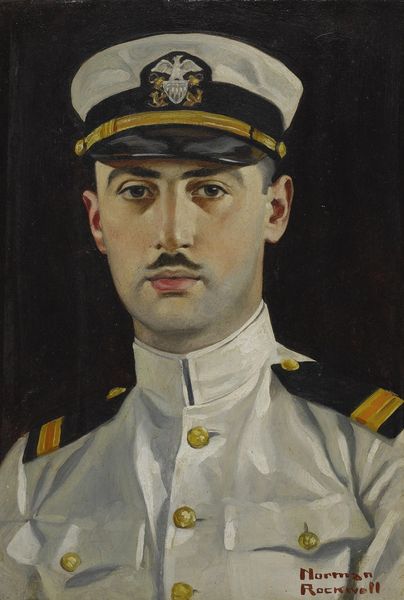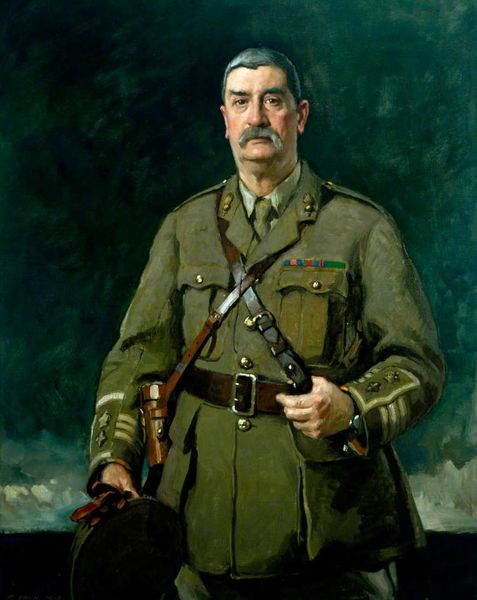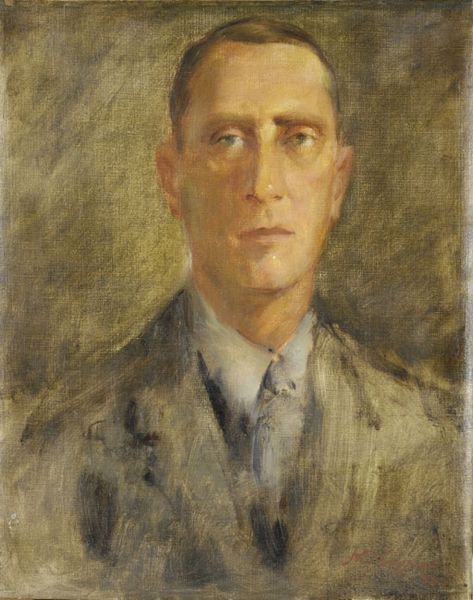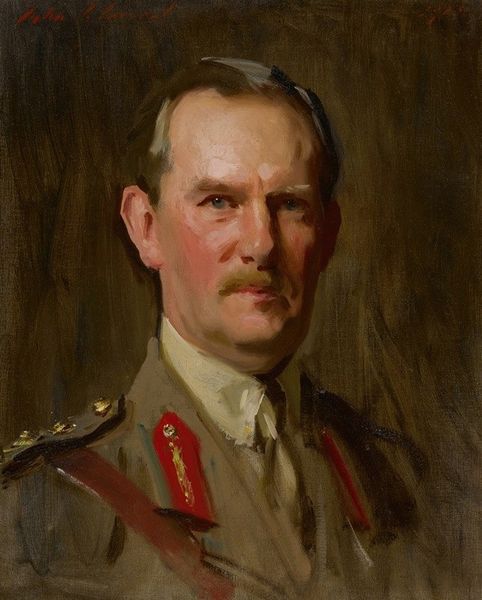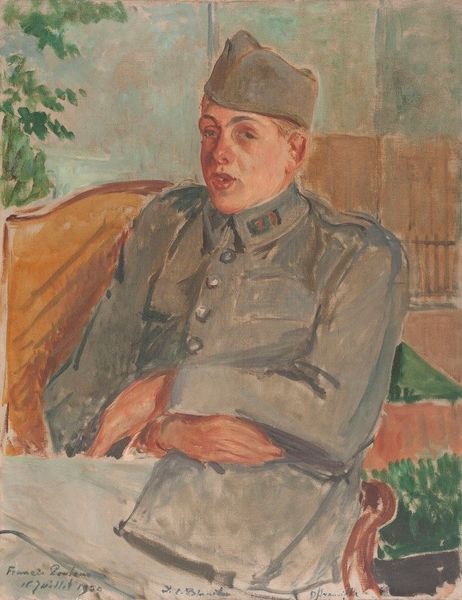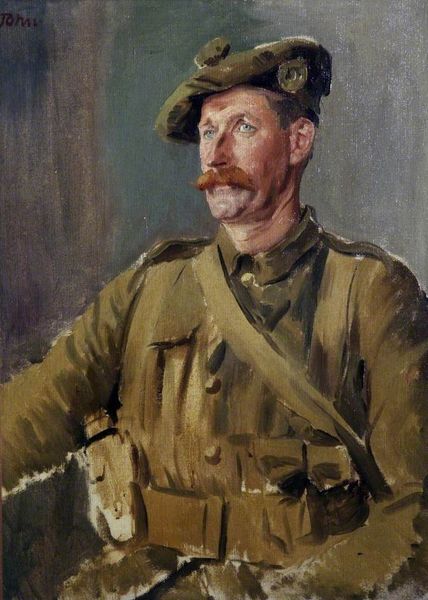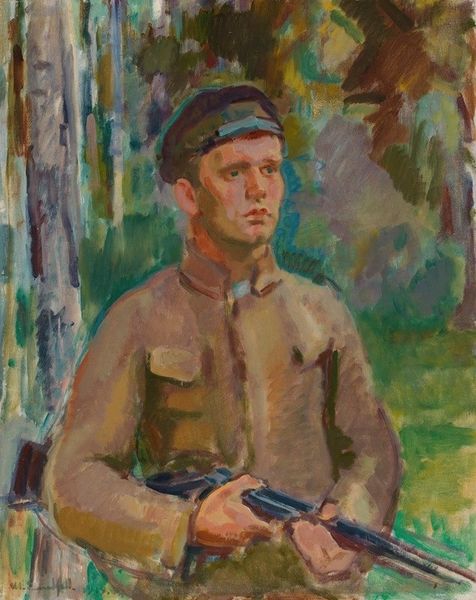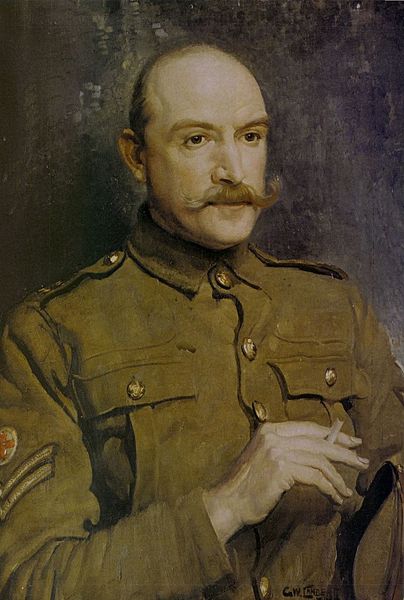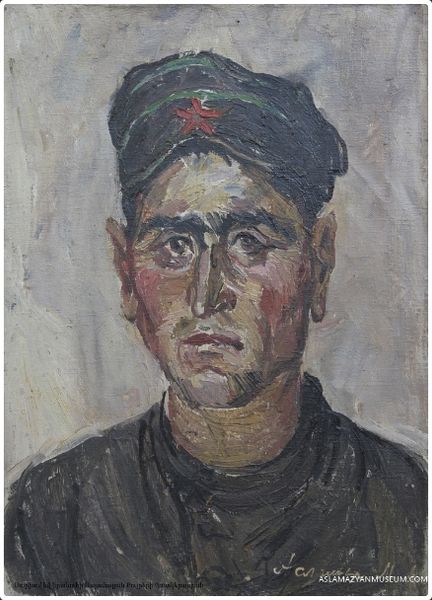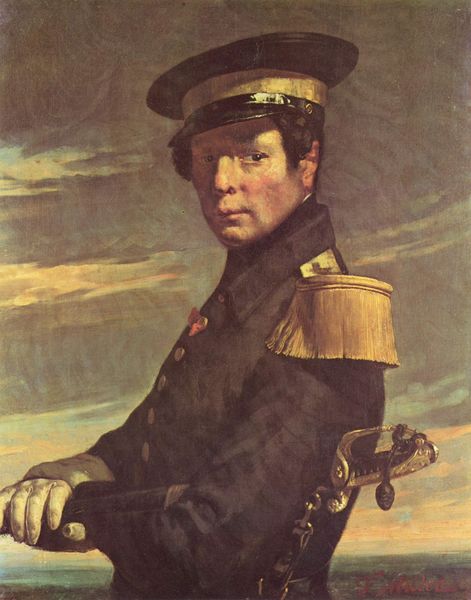
Copyright: Public domain
Curator: This is William Orpen’s “Portrait of Captain Wood of the Royal Inniskilling Fusiliers,” painted in 1919. It captures, I think, the somewhat troubled mood of post-war Britain. Editor: Yes, the somber color palette and the darkness of the background really create this heavy atmosphere. It gives me the feeling of restrained sorrow. What do you make of the materials used? It looks to be fairly standard oil paint on canvas? Curator: It is indeed oil on canvas, fairly typical for portraiture of the time, but let's consider Orpen's commission as war artist and this subsequent painting. He's grappling here with how to represent military figures after such a cataclysmic conflict. The stiff formality struggles against a very visible vulnerability in Captain Wood's expression. Editor: The rendering of the uniform, its texture and weight, are quite masterful. Look closely at the intricate detail of the embellishments. I wonder about the implications of elevating such things with so much work while obscuring signs of Wood's labor in war? It poses many questions about the process and commodification of making art. Curator: The politics of remembrance are certainly at play. These portraits served as a form of national commemoration but also become objects displayed within very particular cultural institutions, like our museum! There’s a push and pull between documenting individual experience and solidifying a particular heroic narrative that, predictably, serves the establishment. Editor: Right. There's a tension here—the portrait immortalizes Captain Wood, yet simultaneously uses his likeness for specific ends. I think investigating the raw materials used to compose the final work unveils this more thoroughly. I wonder, how were these pigments acquired? How much did Orpen labor in painting them? Curator: Those are all critical questions when examining any artwork. I'm left thinking about how Orpen uses this very traditional medium of oil paint to attempt, with some success I feel, a rendering of a modern, perhaps more disillusioned kind of heroism. Editor: Agreed, the way the traditional form is slightly disrupted— that hints at how artistic creation shapes our understandings of materiality. Looking through those lenses makes me see new dimensions to Captain Wood’s portrait.
Comments
No comments
Be the first to comment and join the conversation on the ultimate creative platform.
